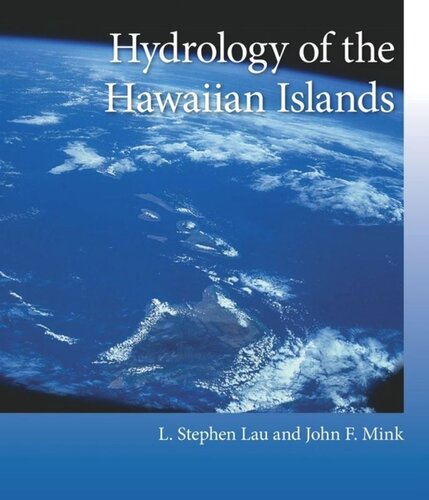

Most ebook files are in PDF format, so you can easily read them using various software such as Foxit Reader or directly on the Google Chrome browser.
Some ebook files are released by publishers in other formats such as .awz, .mobi, .epub, .fb2, etc. You may need to install specific software to read these formats on mobile/PC, such as Calibre.
Please read the tutorial at this link: https://ebookbell.com/faq
We offer FREE conversion to the popular formats you request; however, this may take some time. Therefore, right after payment, please email us, and we will try to provide the service as quickly as possible.
For some exceptional file formats or broken links (if any), please refrain from opening any disputes. Instead, email us first, and we will try to assist within a maximum of 6 hours.
EbookBell Team

0.0
0 reviewsWhy is groundwater the predominant drinking water source in Hawaii? Why are groundwater sources susceptible to pesticide contamination? How long does it take for water in the mountains to journey by land and underground passages to reach the coast? Answers to questions such as these are essential to understanding the principles of hydrology—the science of the movement, distribution, and quality of water—in Hawaii. Due to the humid tropical climate, surrounding ocean, volcanic earth, and high mountains, many hydrologic processes in the Islands are profoundly different from those of large continents and other climatic zones. Management of water, land, and environment must be informed by appropriate analyses, or communities and ecosystems face great uncertainty and may be at risk. The protection of groundwater, coastal waters, and streams from pollution and the management of flood hazards are also significant. This volume presents applications of hydrology to these critical issues.
The authors begin by outlining fundamental hydrologic theories and the current general knowledge then expand into a formal discussion specific to Hawaii and the distinctive elements and their interrelations under natural and human-influenced conditions. They include chapters on rainfall and climate, evaporation, groundwater, and surface runoff. Details on the quantification of hydrologic processes are available to those with more technical knowledge, but general readers with an interest in the topic—one of singular importance for the Hawaiian Islands—will find much in the volume that is timely and accessible.